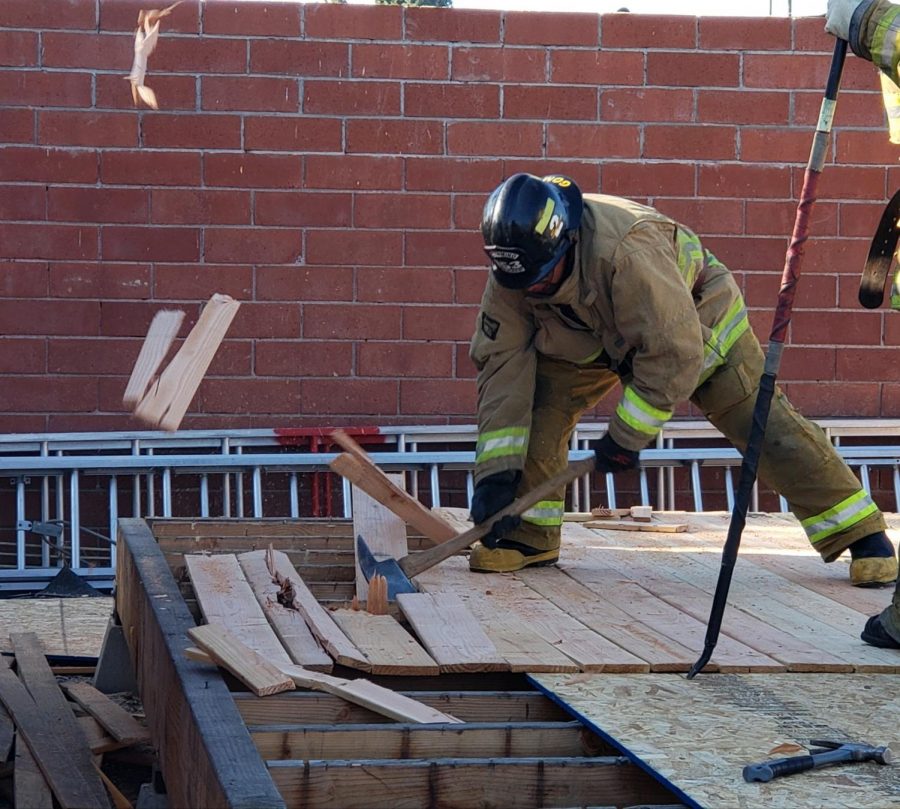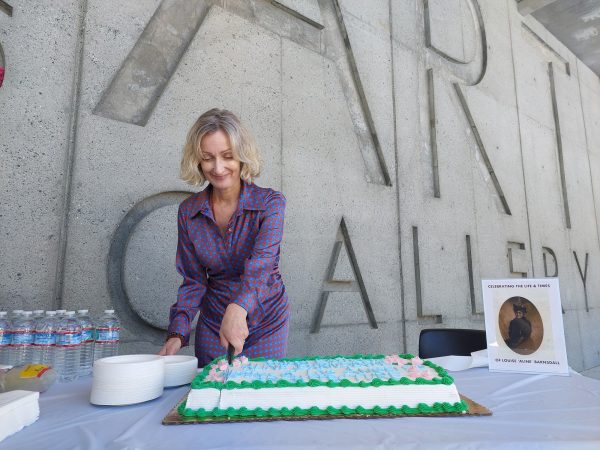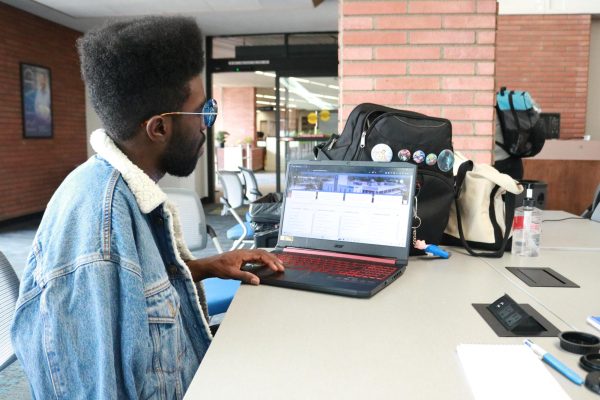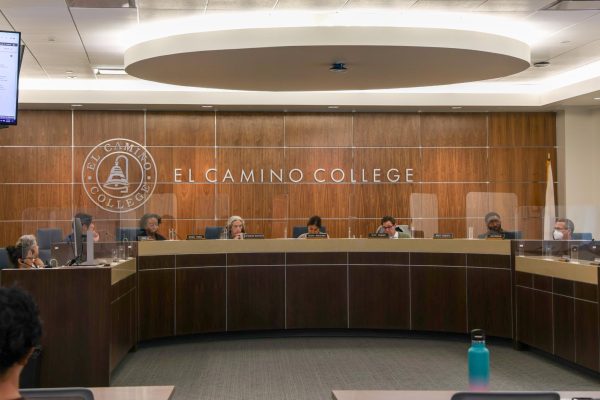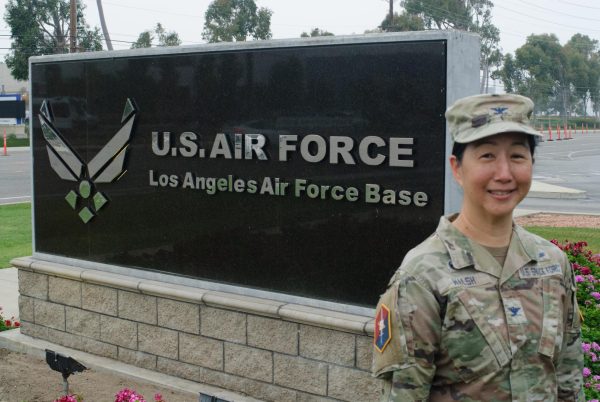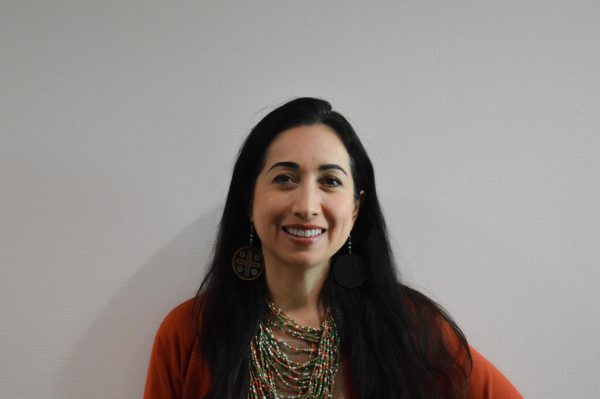Firefighter trainees endure long hours, demanding tasks during fire academy
El Camino College Fire Academy student Alex Gomez practices cutting holes in wooden boards with an axe for roof operations Wednesday, Oct. 23. The academy, formerly known as the South Bay Fire Academy, has been training firefighters for 50 years. David Rondthaler/The Union
His first class began at 7 a.m. but Kyle Ebersole was up hours before the crack of dawn, preparing for another long, demanding day at the El Camino College Fire Academy.
Upon arriving at school, Ebersole would make sure the American flag waved proudly in the sky and then proceeded to line up for inspection where his instructors made sure he was up to code.
After the morning routine, he would be sent to work on his physical fitness followed by a classroom session where they taught him skills, including throwing ladders, how to put on firefighter gear and how to pull and load a hose.
During lab time, he participated in live training where he put everything he learned to the test until 5 p.m.
“You are running around, your legs are tired,” Ebersole, 20, said. “You put on the soaking wet gear on all the time because you get wet from sweat or the water so it’s always wet.”
But before he could do any of that, Ebersole first had to be accepted into the academy.
The ECC Fire Academy, formerly known as the South Bay Fire Academy, is a program at EC that has trained firefighters in the area over the last 50 years.

Meeting four to five times a week for 16 weeks. The class takes place off-campus in Inglewood and is from 7 a.m. to 5 p.m.
Jeffrey Baumunk, the Director of Public Safety Education Programs, said that for students to apply for the academy, they must first take fire technology 1,3,5 and 6, which cover topics like the history of fires, laws regarding firefighting, fire prevention, and building structures.
After completing those courses, students are required to get their Emergency Medical Technician certification or be a part of the national registry, as well as pass the Biddle test or Candidate Physical Ability Test.
“Everything we teach prepares [the students] for the job,” Baumunk said. “It is ever-changing so we can’t teach them everything but we get you started.”
That is why students applying for the academy are given a pre-test that determines how fit and in shape they truly are, Josh Boies, the director of the fire academy said.
“We want to see them pass because it’s a demanding class,” Josh Boies said. “[But] if you aren’t in shape then your body will always be recovering and that’s a problem.”
In the fire academy, there is a lecture and lab where lab time outweighs lecture time, Boies said.
Instructors are career firefighters either current or retired and most of them are from the program. They are also from all different departments and teach different perspectives according to Baumunk.
“The instructors are really good, they understood how our minds work. Knew that we needed more hands-on and less time in the classroom,” Jared Kuwae, 21, graduated from the fire academy last semester, said. “They were really supportive but also strict when needed.”

During lab time, students do live training often about things discussed in the classroom like how to use the equipment, fire simulation, what to do when a person is down in a building.
Jack Matsunaga, 24, applied and was accepted into the academy this year.
“The process for applying was straightforward. Some background info on the application, then a physical check, then they invited me to the physical test,” Matsunaga said. “When I learned I got in it was exciting.”
Matsunaga said he enjoys going to class every day while bonding with his fellow colleagues.
“Everyday is a blast, it’s hard work but we learn a lot every day,” Matsunaga said. “It’s fun to have a cool team to have to go through with it, they are a good group of guys.”
However, while some students may find life at the academy exciting, others have problems adjusting.
When applying Sam Waters, a graduate from the fire academy last semester, was inspired when he was first accepted.
“I didn’t know how it would go but I was motivated to be selected,” Waters said. “I wanted to go to the gym more, have better-eating habits and read more.”
But Waters faced some mental challenges while getting adjusted to life in the fire academy.
“One of the difficulties was waking up at 4:30 a.m. Monday through Friday,” Waters said. “Another one was crawling through a 16-inch tube and jumping from the fourth story of a building.”
But he made it through and graduated last semester.
The reason why the academy pushes students to train and practice so hard is because safety is of the utmost importance, Boies said.
“Everything you learn in this class stacks on top of each other,” Boies said. “You have to use all the puzzle pieces to come together so you can step off the truck and put the fire out.”
Editor’s Note: Corrected misspelling in names and grammar on Wednesday, Dec. 4, at 10:37 a.m.


